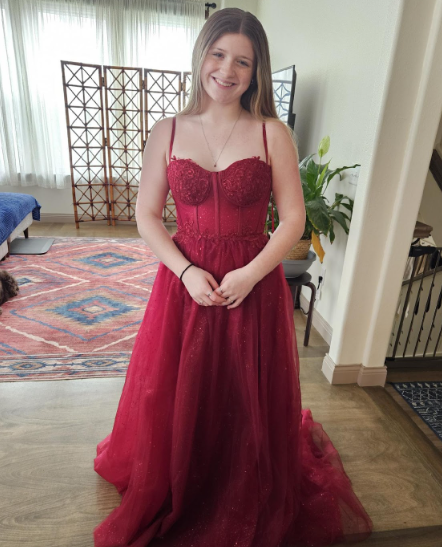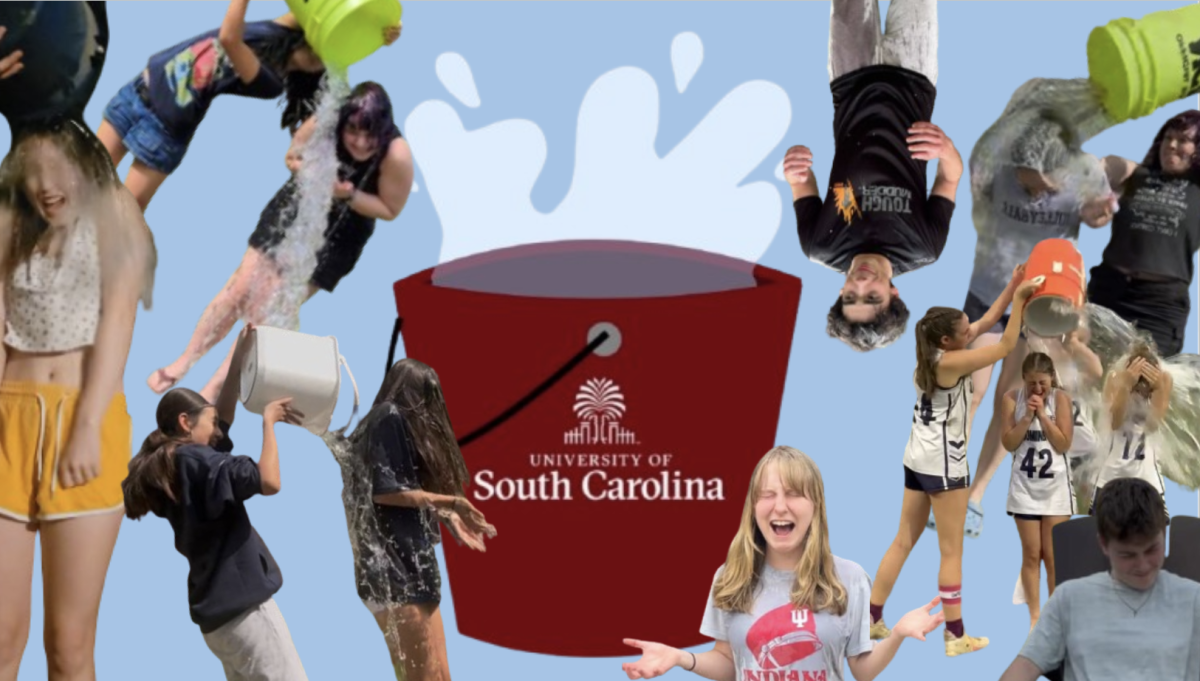The Covid-19 pandemic has turned many of us to baked goods and online yoga for any sense of comfort. For some Americans though, this chaotic period has been a call to action. Whatever their background may be, ordinary people are finding ways to help.
I recently sat down over Microsoft Live with South science teacher Angela Floyd to discuss her experience creating face shields for firefighters in need.
So let’s start with basics. How would you describe a face shield to someone who’s never heard of one?
“A face shield is very much like a visor, but instead of being horizontal and protecting you from the sun, it’s vertical and making a physical barrier for droplets.”
What inspired you to start making face shields?
“Need. Do you want to hear the story?”
Yes, I would love the story.
“I have a good friend who is a fire chief, in a small resort town in Idaho. He had put out the word that they were going to need some masks, and I know how to sew. I love sewing. I contacted him, and he wrote me back and said “Actually, we have enough people making masks. Do you think you could make me some face shields?” I said, “Well, yeah. I can do that with all the stuff I already have in my sewing cabinet.” I made him a prototype, and he liked it, and he asked me if I could make some for his guys in the fire department.”
How many did you make for them?
“Well, the deal was,they were having huge spikes in Covid [cases] at their little resort town. It’s a teeny tiny town with a teeny fire department, but it’s a resort town. As soon as it got bad in California, [people from the West Coast] all left their real homes and drove out to Idaho, and they brought Covid with them…Their per capita rate was higher than New York. The volume was much lower, but the cases per resident was higher there. They couldn’t get any face shields, if you remember the PPE was in short supply at that time, and so [my friend] was desperate. They were coming into contact everyday with Covid positive people. In about 3 days I made 20 face shields.”
Wow. Can you show me what they look like?
“Yeah…I made a thick front headband. The back is just a piece of elastic to stretch over your head. And then this is clear vinyl. It’s very soft, but it’s also washable. So this whole thing you could throw in a washing machine, or a sink, and let it dry, and then reuse it. So it covers your eyes, it covers all the way around the sides of your face to your ears, it covers your nose, and it basically covers as low as you want.”
They look really effective. Did you end up making any more?
“So he took a picture of one of his guys wearing one, posted it to Facebook, everybody was happy, and that was the end of that. Here in Bloomington, I was contacted by the fire department, and I was supposed to help coordinate the production of over 100 of these things for local firefighters. I think that was long enough ago that they’ve been able to purchase some.”
Would you say you’ve always been crafty, or was this something new?
“Oh, I’ve always been crafty. I took sewing in high school, and I loved it. I bought myself a little sewing machine after college, and I’ve been sewing ever since. I loved to sew my kids’ costumes when they were little, I sewed crazy, fancy costumes for my kids. I love sewing projects. I’ve probably made 100 masks at this point, and then of course the face shields. I recently picked up some fabric from Teacher’s Warehouse, and I’m going to sew some capes for my skeleton and science models at school because the disinfectant they spray settles and makes everything sticky. I can’t have my models sticky! Do you sew?”
I used to be really into sewing, but I kind of fell off of the wagon. Do you think I should pick it back up?
“You absolutely should pick it back up. Everyone should. I would say at this point in America, not many people have sewing skills, and really, I would call it a lost art. I know I sound like a home ec teacher and not a science teacher, but I just feel like it’s a really important skill.”
Finally, do you have any advice for students who are interested in getting involved like you did?
“Keep your eyes open. There is always a need to help somewhere. People who are willing to help others will always find a place to help.”
While baking an obscene amount of banana bread is a completely valid way of coping with the pandemic, local volunteers like Angela Floyd can inspire us to find our own way to help amid the chaos.

